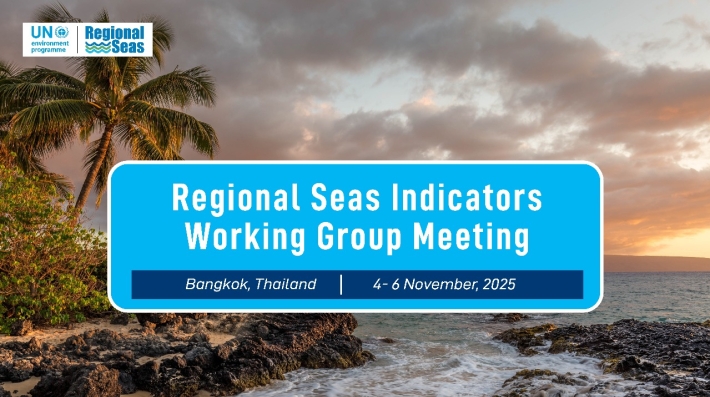An appointment in Bangkok from 4 to 6 November will bring together the Regional Seas Indicators Working Group, which will meet to review and update the set of Regional Seas Indicators.
The workshop will gather representatives from the 18 Regional Seas Conventions and Action Plans (RSCAPs) and relevant global frameworks.
The indicators provide a common framework for monitoring ecosystem health, pollution levels, biodiversity, and socio-economic dimensions, enabling the member countries of the Regional Seas Conventions and Action Plans to measure progress and compare results at national, regional, and global levels.
Developed in 2016 by the United Nations Environment Programme (UNEP), the Regional Seas Core Indicator Set was designed to provide a common basis for reporting on and assessing the state of the marine and coastal environment across all Regional Seas Conventions and Action Plans.
With the adoption of the Kunming–Montreal Global Biodiversity Framework, the Global Framework on Chemicals, the ratification of the Biodiversity Beyond National Jurisdiction (BBNJ) Agreement, and the implementation of the 2030 Agenda for Sustainable Development, in addition to the establishment of the Regional Seas Strategic Directions 2026–2029, the Regional Seas Core Indicators now need to be updated, streamlined, and aligned with global frameworks.
In preparation for the workshop, two online technical sessions were held on 7 and 16 October. These meetings included discussions on the proposed procedure to assess the current Regional Seas Indicators (adopted in 2016) and to agree on a revised set of indicators to be adopted by all Regional Seas.
Among the expected outcomes of the Bangkok meeting:
– Agreed Indicator Set
A consolidated and updated list of Regional Seas Core Indicators, identifying which indicators remain relevant, which should be modified, and which should be discontinued.
– Strengthened Alignment and Justification
A shared understanding of how the Regional Seas Core Indicators align with the Kunming–Montreal Global Biodiversity Framework, the relevant Sustainable Development Goals, and related Multilateral Environmental Agreements, ensuring political relevance and global visibility.
– Resource Mobilization and Allocation
Agreement on the link between prioritized indicators (Tier I, II, and III levels) and related resource needs, clarifying how financing and capacity-building support can be mobilized and distributed among the Regional Seas Conventions and Action Plans.
– Alignment with Global Financing Mechanisms
The Kunming–Montreal Global Biodiversity Framework and Sustainable Development Goal 14 are directly linked to international financing channels, such as the Global Environment Facility (GEF) and bilateral donor funds. The Regional Seas will discuss how adopting the indicators can strengthen their ability to access such financing mechanisms.
It is expected that the updated set of core indicators and the prioritization plan will be presented at the Seventh United Nations Environment Assembly, to be held in December 2025.
The Regional Seas Programme, established by the United Nations Environment Programme (UNEP) in 1974, includes 18 Regional Seas Conventions and Action Plans. It is a global flagship programme implemented through regional frameworks for cooperation, management, and protection of shared marine and coastal environments.

